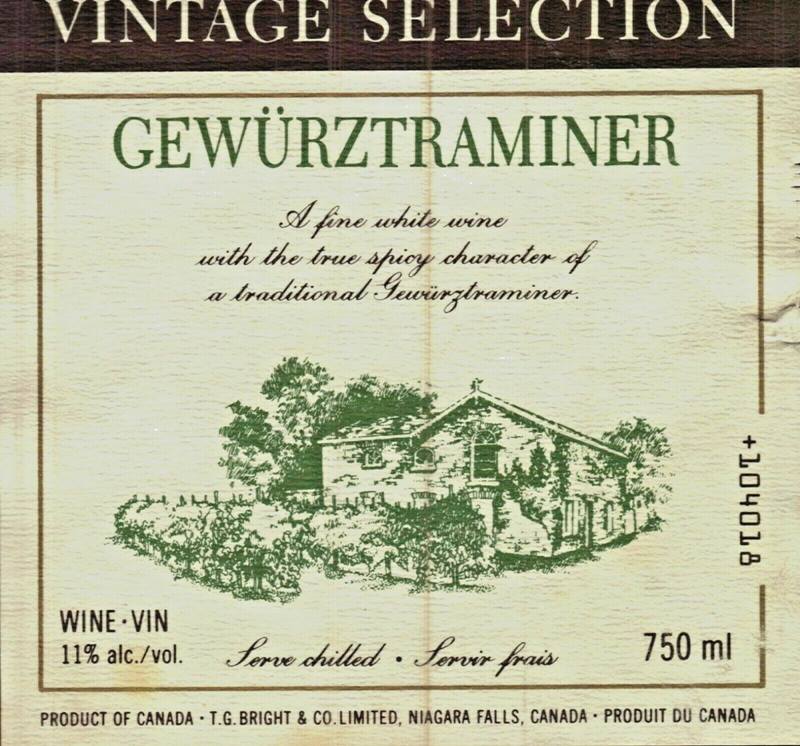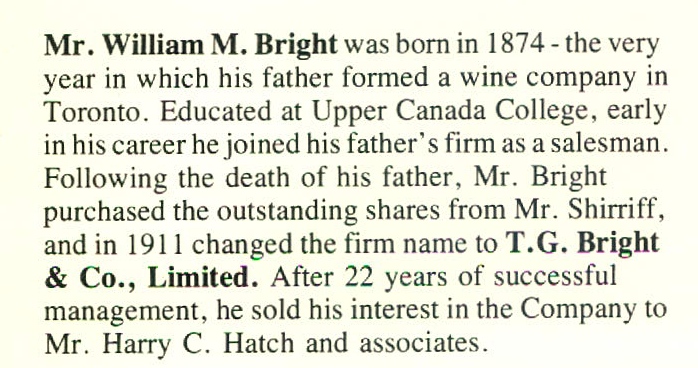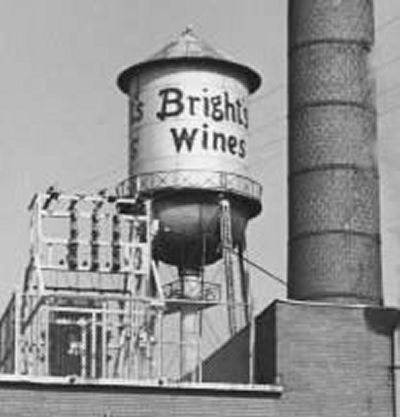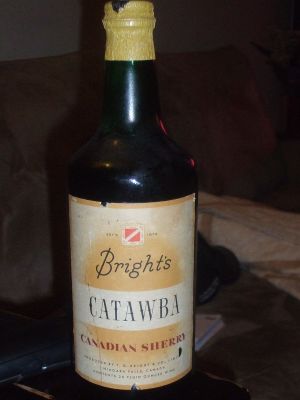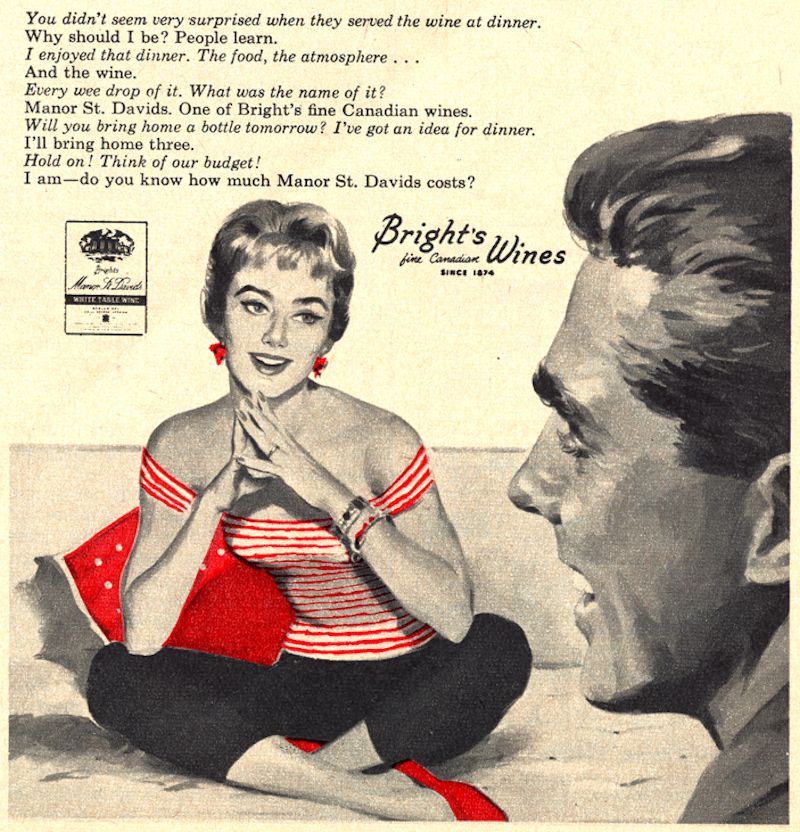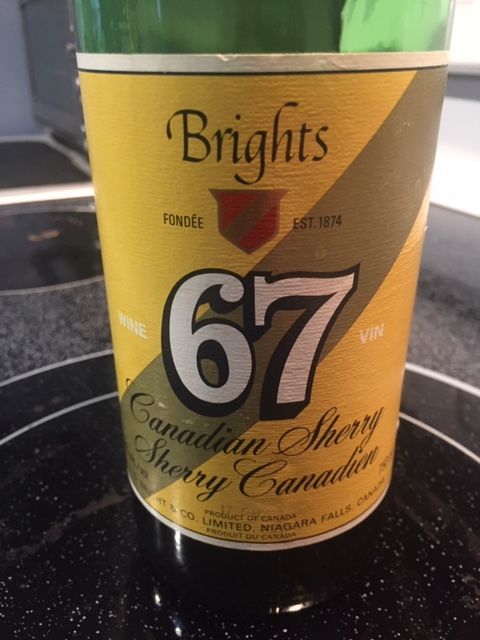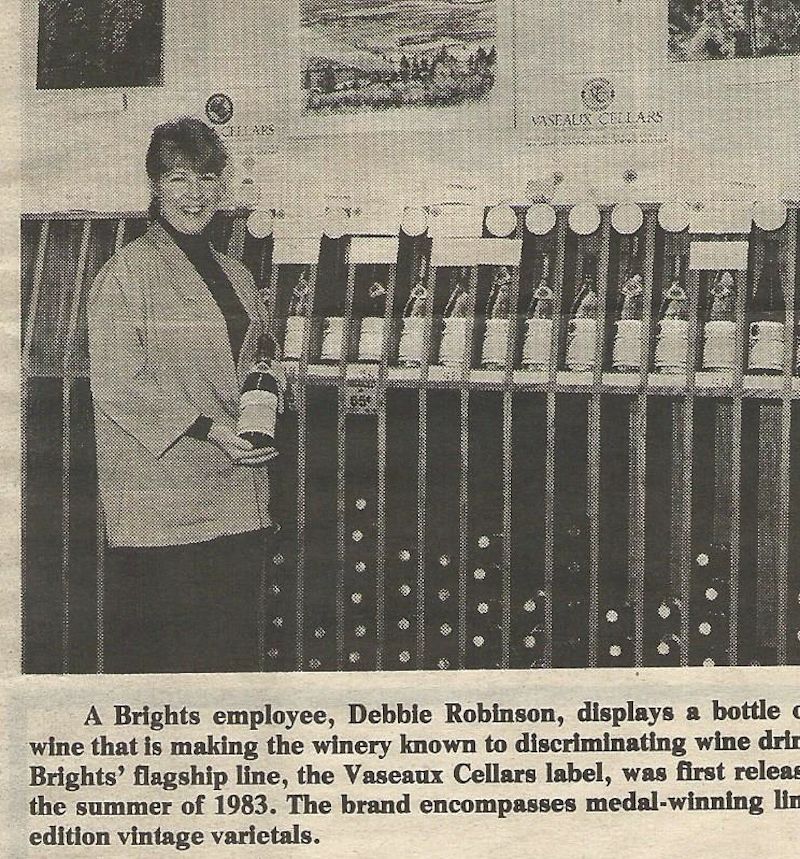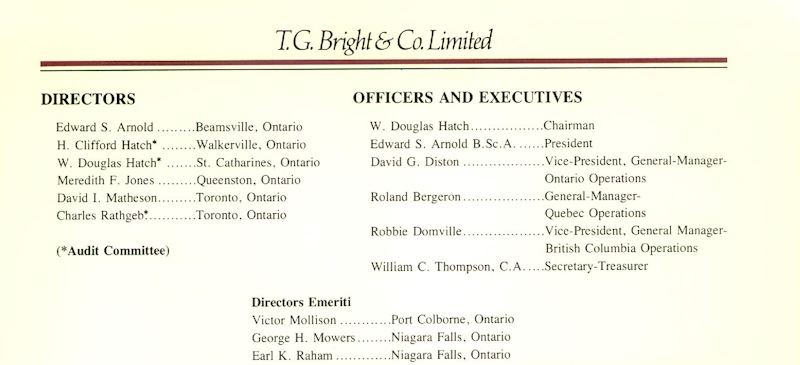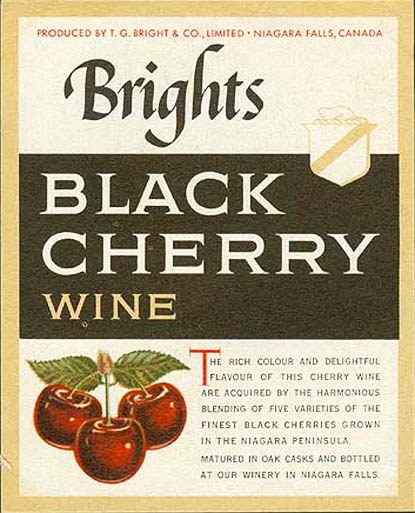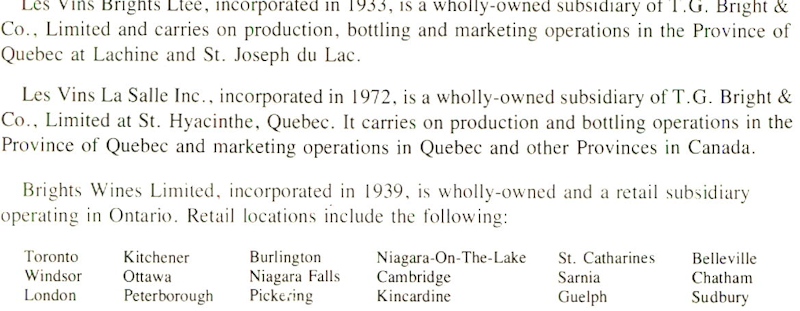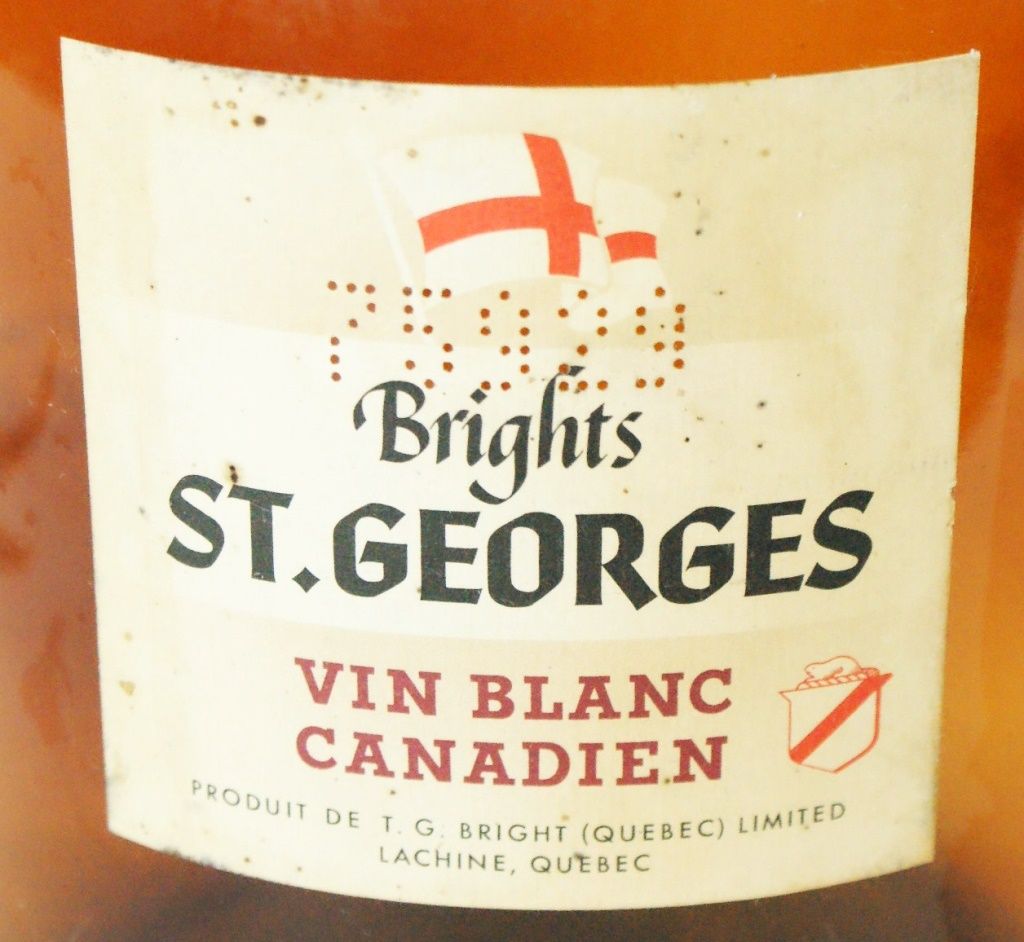Robert Bell's
Wines of Canada
Since 1992
Brights Winery
What ever it takes to make great wines
The T.G. Bright & Company Ltd can trace its roots back to 1874 when Thomas Bright and F.A. Shirriff founded the Niagara Falls Wine Company in Toronto. In 1911 they moved to Niagara Falls and incorporated 1911 as T.G. Bright & Company Ltd.Brights today is a brand label owned by Arterra Wines Canada., . a leading international producer and marketer of beverage alcohol brands. Brights wines are made at other wineries owned by Arterra Wines Canada.. Until the summer of 2012 they operated under Vincor Canada ( In Canada) and later under the name Constellation Brands
Brights is the second oldest continuously operating winery in Canada, having been founded in 1874 by a pair of lumber merchants, Thomas Bright and Francis A. Shirriff. The Original name was Niagara Falls Wine Co. The winery had steadily grown in size until in the 1920s its 4,000,000 gallon capacity made it the largest winery in the British Empire and one of the largest in the world. Contributing to its growth were the Prohibition years of 1916 to 1927 when Ontario wines were the only legal alcoholic beverages.
Shirriff left the partnership to go into jam production.
When Prohibition ended in 1927, the demand for Ontario wines nose-dived, and many of the smaller wineries went out of business. Even the large wineries found themselves with huge stocks of wine they could not move, and the Depression of the 1930s only made matters worse. At that time, Brights Wines was sold to Harry Hatch, a man with an idea and the money to carry it out. Hatch owned a controlling interest in Hiram Walker, and Hiram Walker in turn represented some of the top wine shippers of the day in Europe. Canadian wineries made only ports and sherries, but Hatch believed that there must be some way to develop a dry table wine.
Harry Hatch lost no time beginning a rebuilding program at Brights. His first task was to dispose of the surplus wine that could no longer be sold as wine. His second step was to hire top-level employees with the technical knowledge to bring back professionalism to Brights. One of the first people hired was a winemaker, Dr. John R. Eoff, a California-trained food scientist with the Food and Drug Administration. He served brilliantly until his death in 1940, but the memory of his contributions was eclipsed by the dominant and colourful personality of his assistant, Adhemar de Chaunac.
From all accounts, Adhemar F. de Chaunac was a temperamental prima donna whose lack of tact and diplomacy combined with a supreme confidence in his own abilities to make him a person who could not - and would not - be ignored. He was born in 1896 in southwestern France and came to Canada in 1907, returning to France to serve in the French army from 1915 to 1919 before returning permanently to Canada. He was trained as a chemist and had experience in the yeast and dairy industries before being hired as chief chemist at Brights in 1933. In 1944, he was appointed Director of Research, a title he held until his retirement in 1961.
From the beginning, de Chaunac had told Harry Hatch that an expenditure of $600,000 and 20 years would result in good table wines being produced at Brights. No one anywhere in the East was able to produce dry table wines of any quality, though there were others who wanted to. Charles Fournier in New York and Philip Wagner in Maryland were two other important figures who were to embark on the search in the late 1930s and early 1940s for suitable grapes that could be grown in the East. Brights had the added economic incentive of needing to remain competitive in its markets in the British Empire.
Another early decision made by Harry Hatch was to institute a research program that would lead to the production of the grapes that would make a dry table wine. Until that time, Brights had bought all of its grapes, and the only grapes being grown in the Niagara peninsula and the Finger Lakes were the Niagaras and Concords used in the making of the ports and sherries that were the chief products of the day.
Following the years after Harry C Hatch purchased the company they purchased assets of numerous wineries, Robinet Freres 1935, French-Italian Winery 1936, Ascot Wine Company1936, Robinson Wine 37, The Winsor Co 37, S Badalaoto Winery 37, Old Fort 39, Hillrust Wine Co 40, Kitchener Wines 51, Fred Marsh 53, and Twin City Wine Co in 1956.
In 1934, Brights began its own vineyard program with the purchase of 1,400 acres of Niagara and Concord. Among the acreage bought was 200 acres belonging to Jacob Hostetter, and Jake was hired as the vineyard manager. The Hostetters had moved from Pennsylvania to Ontario during the American Revolution, and the land had been farmed by the family since 1776.
The retirement of George Hostetter on June 30, 1986, marked the severing of an important tie between present and past at T.G. Bright & Company, Ltd., in Niagara Falls, Ontario. Starting in 1933, and continuing for more than a quarter century, Brights and the people associated with it provided the leadership that transformed the Canadian grape and wine industry into what it is today. While the pioneering days have long since ended at Brights Wines - the winery spells its familiar name without an apostrophe - George Hostetter was the last link to an important and vibrant era.
As difficult as it may be to realize today, the starting point for the research program at Brights was the planting of Agawam, Elvira, Catawba and Delaware. There were a few old plantings of Delaware and Catawba in the peninsula, and very little yield. De Chaunac had chosen Delaware and Catawba as the varieties he wanted to work with during this period because they seemed to lack the heavy foxiness of Concord and Niagara. In addition, Elvira could be treated by concentrating it to remove much of the foxiness. Efforts to buy the grapes had proved futile. George Hostetter, Jake's son, recalls being sent out by his father in the late 1930s to buy 25 tons of Delaware. He drove all over the peninsula and returned with a total of barely 15 tons. In 1940, George began his career at Brights as an assistant to de Chaunac, working full time in the propagation of grapes while attending college at the University of Toronto. He graduated in 1944 with a B.S. in agricultural science.
De Chaunac used these native American varieties to make the first new Ontario table wine since Prohibition in 1939 and 1940, and 5,000 gallons were released in 1941 as Manor St. Davids Sauterne. The research stations at Geneva, New York, and Vineland, Ontario, were doing little research work in the breeding of new varieties apart from North American hybrids. Some of these were planted at the test vineyards at Brights, along with southern European varieties that fared no better there than elsewhere in the East. There was, however, one test planting of Seibel 1000, later to be named Rosette, a French hybrid red variety. After making an experimental batch of red wine from Seibel 1000, de Chaunac noted that this was the only variety he had tried that made an acceptable red table wine.
The outbreak of World War II in 1939 closed off France as a source of French hybrids. There were test plantings of the French hybrids in the East, however, and during the war, Philip Wagner, Adhemar de Chaunac, Charles Fournier, Richard Wellington and others would get together periodically in the Finger Lakes. Some of the wines Philip Wagner brought along that had been made from the French hybrids removed any doubt that these were the grapes that could be grown in the East that would make a good dry table wine.
As soon as the war ended in 1945, de Chaunac ordered 35 French hybrid varieties, most of them early maturing. When these arrived in 1946, they were planted and George Hostetter was put in charge of the viticultural research program at Brights. Based on the success of these trial plantings, Brights made the decision to begin commercial plantings of the French hybrids, and 40,000 vines were planted at Brights in 1948.
The use of sulfur to control powdery mildew had been known for a long time, but it had always been applied at the time when the mildew had become evident. George Hostetter theorized that trying different spray schedules might bring about a marked improvement in the control of powdery mildew, and using sulfur from the start of the season worked. The combination of new sprays and new methods of applying sprays enabled the trial plantings of vinifera to succeed. In 1951, ten acres of Chardonnay were planted: this was not only the first commercial planting of the vinifera in the East, but it became the first successful vinifera vineyard in the East.
Meanwhile, back in the winery, de Chaunac was coming out with his own list of firsts. Manor St. Davids Claret, a blend of Chelois and Rosette, was released in 1949, the first French hybrid table wine to be marketed commercially in Canada. The first commercial vinifera wines to be produced in the East were released by Brights, a Pinot Champagne in 1955, and a Pinot Chardonnay in 1956. The world's first 7% sparkling wine was developed about 1950 when the Liquor Control Board of Ontario approached de Chaunac with the suggestion that a low alcohol wine ought to be produced. Working in nominal partnership with the Fred Marsh Winery, which Brights acquired in 1953, de Chaunac's technically stable 7% Winette and 6.5% Dubarry Sparkling Rose, were put on the market by Brights in 1953.
Brights Winette. a low alcohol wine produce in early 50's
photo provided by Fred Couch
De Chaunac was responsible for the first bottle-fermented champagne produced in Canada when the first President champagne was released in 1949. Originally named President because it was made from the President grape, a Munson hybrid, the cuvee eventually came to include Catawba, Dutchess, Delaware, Rosette, and Seyval. The list of winemaking "firsts" accumulated by Brights during this period is a long one.
In the experimental vineyards, Warnerhof Experimental Farm, during George Hostetter's time, more than 500 grape varieties were brought into Canada and tested, and more than 1,000 new Canadian seedling varieties were developed. A superior clone of Baco Noir, know as "George's Clone," has produced wines that have won more gold medals in international competition than any other red varietal from Brights. In 1947, a program was started to provide growers with the services of a team of professional viticulturists to help growers improve grape quality. Brights, which started a large scale grafting program after the war, also became the first Canadian winery to supply growers with grafted vines.
Brights was instrumental in importing and propagating the hybrid varietals such as Baco Noir from France in 1947
Much of the success in the vineyard was due to the experimentation that led to the development of viticultural practices that would work in the East. Controlling crop production to increase the quality of wine was pioneered in Canada at Brights in 1952. Extensive pruning experiments were also being carried out at about the same time. During the 1950s, cuttings from the French hybrids were shipped in quantity to the United States, primarily to New York State wineries, and most of the hybrids planted during those years came from Brights.
1958 Advertisement.
Adhemar de Chaunac retired in 1961, and George Hostetter subsequently took over his duties as Director of Research. Both men have been honoured for the roles they played during this pioneering period, winemaker Adhemar de Chaunac by having a grape variety named after him, and viticulturist George Hostetter by having a wine named in his Honor. Each tribute was fitting in that it underscored the vital and unalterable link between good grapes and fine wine - the goal Harry Hatch had set when he purchased Brights in 1933.
Bates, Harold A distinguished, silvery-haired, self-described "man of few words," winemaker Bates left Sumac Ridge in 1996 to become an Anglican priest. Born in Niagara Falls, he received a microbiology degree from the University of Guelph and joined T.G. Bright & Co. in 1967, where he had a hand in making the well-known Brights President Canadian Champagne. "While we were living in Ontario" -- the "we" referring to his wife, Darlene, a nurse -- "we had an obsession to go winemaking in the United States or Australia." In 1971 he joined United Vintners at its big Fresno winery in California, spending the next six years there and learning to work under pressure. "We did 150,000 tons of grapes every crush and bottled 100,000 cases a day," he recalls. One of his Guelph classmates, Bob Claremont, was then the winemaker at Calona Wines and in 1977 recruited Bates, who was ready to return north of the border. "I missed Canada." Bates spent the next five years at Calona and had become that big winery's operations manager by 1982 when he took a sabbatical from winemaking, first to teach at a boy's school in Edmonton and then to run a group home in Kelowna for four years. He returned to winemaking at Sumac Ridge in 1987, helping the winery launch Stellars Jay and its other sparkling wines.
Arnold, Edward (1937-): Born in Steveston, B.C., the son of a fisherman, Arnold became a food chemist and was apprenticing with a Toronto brewery when in 1965, wanting to return to British Columbia, he talked Andrew Peller into hiring him for the Andrés winery at Port Moody. "One of my better moves," Peller wrote in his autobiography. "Arnold turned out to be an invaluable asset." By 1970 he was the chief winemaker at the big Andrés winery acquired at Winona, Ontario. Brights lured him away in 1976 and promoted him to president in 1978. He retired in 1994.
Sam Baptiste In 1982 was then the elected chief of the Osoyoos Indian Band. He was also a grape grower. Brights, which was headquartered in Niagara Falls and was Canada’s oldest winery, proposed leasing land from the band for an 800,000-gallon winery near Oliver. Within First Nations circles, the proposal was controversial. "It almost didn't happen," Sam once told me in an interview. He recalled some chiefs telling him: "Sam, the biggest problem on every reserve is alcoholism -- and you're putting in a winery!" His first reaction was to call off the talks with Brights but he changed his mind after the meeting with other chiefs. "I thought about it and I decided it was none of their business."
The $1.9 million investment by Brights was a foundation for the extensive involvement of the Osoyoos Indian Band in the South Okanagan’s wine industry. Chief Clarence Louie, who succeeded Sam as the band’s chief, told author John Scheiner proudly of the many band members who, far from having problems with alcohol, were retiring on pensions after a long career in the various wine businesses on the reserve. One of those businesses is the 304-acre Inkameep Vineyard just northeast of Oliver. Sam went to work there in 1987 after leaving band politics. Under his management, the vineyard has come to be one of the most highly regarded vineyards in the South Okanagan. He was in charge of replanting the hybrid grape varieties with vinifera grapes.
In May of 1982 Brights House of Wines opened in Oliver. It was a joint adventure between Brights and Osoyoos Indian Band. Its was know as Inkameep Vineyards. With a 1.9 million Federal-Provincial Industrial Development Subsidiary Agreement the band built a 800,000 gallon Winery on 7 acres. Bright installed 3.5 million in equipment. Brights least the land from the Osoyoos band. The first wine produced was called Liebes-Heim
The winery manager was John Bremmer who had previously worked at Andres St Michelle. The winemaker, BC's first female winemaker, was Lynn Stark who late married John Bemmer in 1980.
The wines were marked under Brights House of Wine and Vaseux Cellars.
1984 Directors
1993 Cartier and Inniskillin merge with T.G. Bright to form Vincor. Also in 1993 they launched their very successful Jackson-Triggs brand
See Vincor History
Today the label is owned by Arterra Wines Canada who purchased Constellation Brands Canada in 2016. formerly Vincor Canada.* This label on the left is from a wine produced in 1960.
Today the label brand is been replaced.
2017 maybe the last time you see the name on a bottle of wine.Constellation sold their Canadian interest to Ontario Teacher's Pension Fund in 2016. Arterra Wines Canada
For more return to History
* Constellations Brand Inc in the summer of 2012 announced they would no longer use Vincor Canada. All North American operations will conduct business under Constellation Brand. In 2016 Constellations sold their interest of Canadian wineries to the Ontario Pension Teachers Fund, Arterra Wines Canada
On Wednesday, October 25, 1933, a U.S. federal trademark registration was filed for HERMIT SHERRY NIAGARA FALLS WINE CO. T.G. BRIGHT & CO. LTD NIAGARA FALLS ESTABLISHED 1874 BOTTLED BY THE PROPRIETORS by T.G. BRIGHT & CO. LIMITED, STAMFORD, ONTARIO. The USPTO has given the HERMIT SHERRY NIAGARA FALLS WINE CO. T.G. BRIGHT & CO. LTD NIAGARA FALLS ESTABLISHED 1874 BOTTLED BY THE PROPRIETORS trademark serial number of 71342873. The current federal status of this trademark filing is-expired. The correspondent listed for HERMIT SHERRY NIAGARA FALLS WINE CO. T.G. BRIGHT & CO. LTD NIAGARA FALLS ESTABLISHED 1874 BOTTLED BY THE PROPRIETORS is ? of *****, *****, ***** ***** . The HERMIT SHERRY NIAGARA FALLS WINE CO. T.G. BRIGHT & CO. LTD NIAGARA FALLS ESTABLISHED 1874 BOTTLED BY THE PROPRIETORS trademark is filed in the category of . The description provided to the USPTO for HERMIT SHERRY NIAGARA FALLS WINE CO. T.G. BRIGHT & CO. LTD NIAGARA FALLS ESTABLISHED 1874 BOTTLED BY THE PROPRIETORS is WINE.
In June, 2003, Canada and the European Union announced that they had entered into an agreement that will commit the parties into protecting each others’ geographical indications for wines and spirits. The agreement has yet to be ratified by the European Council and the Canadian Parliament, and it is not known when ratification will occur. However, the main effect of the agreement appears to be to phase out the generic use in Canada of a number of European geographical indications for wines. While the terms of the agreement and how they will dovetail with Canada’s existing laws regarding the protection of geographical indications, which are incorporated into the Canadian Trademarks Act, remains unclear, the intent appears to be that Canadian wine makers will cease use of certain French geographical indications in three stages. In the first stage, the use by Canadians of Bordeaux, Chianti, Claret, Madeira, Malaga, Marsala, Medoc, and Mosel will cease as soon as the agreement comes into force. Since these indications are not presently used by Canadian wine makers, this particular provision is of no more than academic interest. The use of Bourgogne/Burgundy, Rhin/Rhine and Sauterne/Sauternes will cease by December 31, 2008. Since the use of these geographical indications by Canadians is today virtually unknown, this provision is also of no great significance. Finally, the use of Chablis, Champagne, Port/Porto and Sherry will cease after December 31, 2013. These geographical indications are currently in widespread use by Canadians as part of generic wine terms like “Canadian Chablis” and “Canadian Champagne”. This therefore appears to be the principal real effect of the agreement.
Related Links
History
Vincor History
London Winery
Baby Duck
The Beginning
Constellation Brands
As the cost of living continues to rise, the cost of maintaining this website has tripled in the last two years alone our non-profit website would welcome a little support!
A small donation would be greatly appreciated.
e-mail us and ask how you can be a page sponsor
Home | Sitemap | History | Contact Us | ©2023 Robbert A Bell
